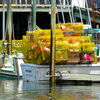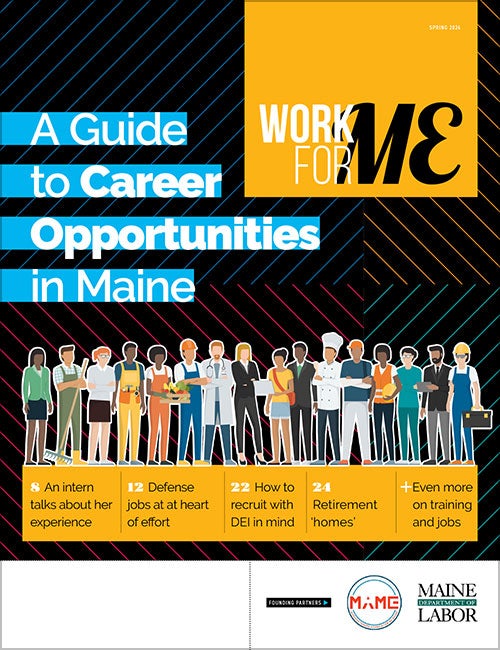Processing Your Payment
Please do not leave this page until complete. This can take a few moments.
- News
-
Editions
-
- Lists
-
Viewpoints
-
Our Events
-
Event Info
- Women's Leadership Forum 2025
- On the Road with Mainebiz in Bethel
- Health Care Forum 2025
- On The Road with Mainebiz in Greenville
- On The Road with Mainebiz in Waterville
- Small Business Forum 2025
- Outstanding Women in Business Reception 2025
- On The Road with Mainebiz in Bath
- 60 Ideas in 60 Minutes Portland 2025
- 40 Under 40 Awards Reception 2025
- On The Road with Mainebiz in Lewiston / Auburn
- 60 Ideas in 60 Minutes Bangor 2025
Award Honorees
- 2025 Business Leaders of the Year
- 2024 Women to Watch Honorees
- 2024 Business Leaders of the Year
- 2023 NextUp: 40 Under 40 Honorees
- 2023 Women to Watch Honorees
- 2023 Business Leaders of the Year
- 2022 NextUp: 40 Under 40 Honorees
- 2022 Women to Watch Honorees
- 2022 Business Leaders of the Year
-
-
Calendar
-
Biz Marketplace
- News
-
Editions
View Digital Editions
Biweekly Issues
- April 21, 2025 Edition
- April 7, 2025
- March 24, 2025
- March 10, 2025
- Feb. 24, 2025
- Feb. 10, 2025
- + More
Special Editions
- Lists
- Viewpoints
-
Our Events
Event Info
- View all Events
- Women's Leadership Forum 2025
- On the Road with Mainebiz in Bethel
- Health Care Forum 2025
- On The Road with Mainebiz in Greenville
- On The Road with Mainebiz in Waterville
- + More
Award Honorees
- 2025 Business Leaders of the Year
- 2024 Women to Watch Honorees
- 2024 Business Leaders of the Year
- 2023 NextUp: 40 Under 40 Honorees
- 2023 Women to Watch Honorees
- 2023 Business Leaders of the Year
- + More
- 2022 NextUp: 40 Under 40 Honorees
- 2022 Women to Watch Honorees
- 2022 Business Leaders of the Year
- Nomination Forms
- Calendar
- Biz Marketplace
How To: Diversify your investment portfolio
 Michael R. Walp
Michael R. Walp
Many of us today can expect to live many years in retirement. Diversifying money across a range of investments helps protect our portfolios from events we cannot foresee, it reduces the risk of losing on a sole investment and it helps to maximize the odds that investors will reach their financial goals.
Diversification is simply the “act of introducing variety.” Diversifying your investment portfolio does just that, by adding a variety of investments that allow you to take a little risk with some investments while playing it safe with others.
In the short-term, diversified investments do not yield big results. Nor are they designed to net you the largest possible return on investment. Diversification protects you against market volatility.
Here is an example of the power of diversification. Between Jan. 1, 2001, and Nov. 30, 2011, the Standard and Poor's 500 Fund Index returned a 1.4% gain. According to Index Fund Advisors, investors with diversified portfolios averaged a 5.7% annual return during the same time period. While some asset classes purchased by diversified investors have suffered, as a whole, largely due to the strong performance of bonds, diversification has leveled the drops. Had investors only bought the best stocks of 2007 and held them in the 2008 market downturn, they would be down more than 60%, according to T. Rowe Price.
The benefits of diversifying your portfolio
With any investment, there are risks, including loss of money and price volatility. A diversified portfolio is not immune to these exposures. A diversified portfolio will:
- Reduce the overall risk on your investment
- Further reduce risk when the diversification is among assets with low correlations to one another
- Limit losses
- Account for the uncertainty of knowing which investments or asset classes will perform well or poorly or when
- Protect your portfolio from events that you cannot foresee, such as a business bankruptcy
- Maximize the odds that you will reach your financial goals when combined with a solid financial plan.
Your allocation of investments should take into account your cash flow needs, investment goals, risk tolerance and when you think you may need to access the funds in the future.
As your financial needs change, you should review your financial plan, reset goals, reevaluate your investment portfolio and account for these changes. What works when you are young may not work as well when you start a family or change jobs. And as retirement nears, it's important to shift money into asset classes that may not be as risky.
A deeper understanding of diversification
A diversified portfolio distributes investments across several different investment categories such as stocks, bonds, certificates of deposits, money market funds, mutual funds, exchange traded funds, real estate and/or other asset types so that your money isn't all in one place. This is a strategy to combine a variety of assets to reduce your overall risk.
Diversification, while a sound strategy for all, is not a one-size-fits-all, and it's important to spend the time to determine which ratio is right for you. While the perfect balance is hard to achieve, a diversified portfolio coordinates investments that fluctuate in value at different times so that the overall investment can increase in value.
As an investor, it's natural to want to maximize the return on your investment. However, you should avoid succumbing to the temptation to invest all your money in the hottest stock available. Sure, the reward could be huge, but it isn't a sound approach because you are just as likely to lose everything as you are to hit the investment lottery. If you do want to be more aggressive and have a higher tolerance for risk, there's a way to do it. Pair risky, high-return investments with safer investments that deliver lower, more predictable returns. This will help create a balanced portfolio that performs more steadily. Contact your financial advisor if you need help creating or adjusting your portfolio.
Michael R. Walp is a senior vice president and market sales leader at Key Private Bank in Maine. He can be reached at michael_r_walp@keybank.com










Comments